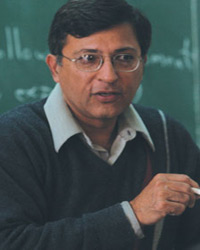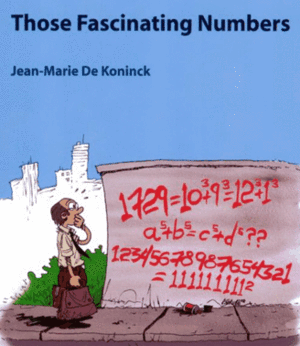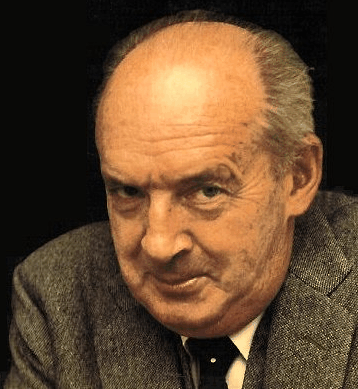From Scientific American:
 Why discuss this topic now that the cold war has ended? Because as other nations continue to acquire nuclear weapons, smaller, regional nuclear wars could create a similar global catastrophe. New analyses reveal that a conflict between India and Pakistan, for example, in which 100 nuclear bombs were dropped on cities and industrial areas—only 0.4 percent of the world’s more than 25,000 warheads—would produce enough smoke to cripple global agriculture. A regional war could cause widespread loss of life even in countries far away from the conflict.
Why discuss this topic now that the cold war has ended? Because as other nations continue to acquire nuclear weapons, smaller, regional nuclear wars could create a similar global catastrophe. New analyses reveal that a conflict between India and Pakistan, for example, in which 100 nuclear bombs were dropped on cities and industrial areas—only 0.4 percent of the world’s more than 25,000 warheads—would produce enough smoke to cripple global agriculture. A regional war could cause widespread loss of life even in countries far away from the conflict.
Regional War Threatens the World
By deploying modern computers and modern climate models, the two of us and our colleagues have shown that not only were the ideas of the 1980s correct but the effects would last for at least 10 years, much longer than previously thought. And by doing calculations that assess decades of time, only now possible with fast, current computers, and by including in our calculations the oceans and the entire atmosphere—also only now possible—we have found that the smoke from even a regional war would be heated and lofted by the sun and remain suspended in the upper atmosphere for years, continuing to block sunlight and to cool the earth. India and Pakistan, which together have more than 100 nuclear weapons, may be the most worrisome adversaries capable of a regional nuclear conflict today.
More here.
From the New York Times Magazine:
 Once again, The Times Magazine looks back on the past year from our favored perch: ideas. Like a magpie building its nest, we have hunted eclectically, though not without discrimination, for noteworthy notions of 2009 — the twigs and sticks and shiny paper scraps of human ingenuity, which, when collected and woven together, form a sort of cognitive shelter, in which the curious mind can incubate, hatch and feather. Unlike birds, we can also alphabetize. And so we hereby present, from A to Z, the most clever, important, silly and just plain weird innovations we carried back from all corners of the thinking world. To offer a nonalphabetical option for navigating the entries, this year we have attached tags to each item indicating subject matter. We hope you enjoy.
Once again, The Times Magazine looks back on the past year from our favored perch: ideas. Like a magpie building its nest, we have hunted eclectically, though not without discrimination, for noteworthy notions of 2009 — the twigs and sticks and shiny paper scraps of human ingenuity, which, when collected and woven together, form a sort of cognitive shelter, in which the curious mind can incubate, hatch and feather. Unlike birds, we can also alphabetize. And so we hereby present, from A to Z, the most clever, important, silly and just plain weird innovations we carried back from all corners of the thinking world. To offer a nonalphabetical option for navigating the entries, this year we have attached tags to each item indicating subject matter. We hope you enjoy.
More here.
Carl Zimmer in Discover:
 Morse’s invention debuted just as researchers were starting to make sense of the nervous system, and telegraph wires were an inspiring model of how nerves might work. After all, nerves and telegraph wires were both long strands, and they both used electricity to transmit signals. Scientists knew that telegraph signals did not travel instantaneously; in one experiment, it took a set of dots and dashes a quarter of a second to travel 900 miles down a telegraph wire. Perhaps, the early brain investigators considered, it took time for nerves to send signals too. And perhaps we could even quantify that time.
Morse’s invention debuted just as researchers were starting to make sense of the nervous system, and telegraph wires were an inspiring model of how nerves might work. After all, nerves and telegraph wires were both long strands, and they both used electricity to transmit signals. Scientists knew that telegraph signals did not travel instantaneously; in one experiment, it took a set of dots and dashes a quarter of a second to travel 900 miles down a telegraph wire. Perhaps, the early brain investigators considered, it took time for nerves to send signals too. And perhaps we could even quantify that time.
The notion that the speed of thought could be measured, just like the density of a rock, was shocking. Yet that is exactly what scientists did. In 1850 German physiologist Hermann von Helmholtz attached wires to a frog’s leg muscle so that when the muscle contracted it broke a circuit. He found that it took a tenth of a second for a signal to travel down the nerve to the muscle. In another experiment he applied a mild shock to people’s skin and had them gesture as soon as they felt it. It took time for signals to travel down human nerves, too. In fact, Helmholtz discovered it took longer for people to respond to a shock in the toe than to one at the base of the spine because the path to the brain was longer.
More here.
Pervez Hoodbhoy in CounterPunch:
 Here ye, Counterpunch readers! The victory of Native Orientalists – the ones which the late Edward Said had warned us about – is nearly complete in Pakistan. It has been led by “the minions of Western embassies and Western-financed NGOs” and includes the likes of “Ahmad Rashid, Pervez Hoodbhoy, Najam Sethi, Khaled Ahmad, Irfan Hussain, Husain Haqqani, and P.J.Mir”. Thus declares Mohammad Shahid Alam, a professor of Pakistani origin who teaches at Northeastern University in Boston, Massachussetts. [CounterPunch, 2 Dec 2009]
Here ye, Counterpunch readers! The victory of Native Orientalists – the ones which the late Edward Said had warned us about – is nearly complete in Pakistan. It has been led by “the minions of Western embassies and Western-financed NGOs” and includes the likes of “Ahmad Rashid, Pervez Hoodbhoy, Najam Sethi, Khaled Ahmad, Irfan Hussain, Husain Haqqani, and P.J.Mir”. Thus declares Mohammad Shahid Alam, a professor of Pakistani origin who teaches at Northeastern University in Boston, Massachussetts. [CounterPunch, 2 Dec 2009]
I ought to be thrilled. Now that I am a certified foreign-funded agent/orientalist/NGO-operator who “manages US-Zionist interests”, a nice fat cheque must surely be in the mail. Thirty six years of teaching and social activism at a public university in Pakistan – where salaries are less than spectacular – means that additions to one’s bank balance are always welcome.
But what did I do to deserve this kindness?
More here.
Wednesday, December 16, 2009
 Mélanie Frappier in The Philosopher's Magazine:
Mélanie Frappier in The Philosopher's Magazine:
Is House simply a “raving lunatic”, or is his obnoxious behaviour a symptom of a more serious condition? We could paraphrase House (in “The Socratic Method”) and answer: “Pick your specialist, you pick your symptoms. I’m a jerk. It’s my only symptom. I go see three doctors. The neurologist tells me it’s my pituitary gland, the endocrinologist says it’s an adrenal gland tumor, the intensivist…can’t be bothered, sends me to a witty philosopher, who tells me I push others because I think I’m Socrates.”
Socrates? If there was someone ancient Greeks thought was a pest, it was he. He was probably a stonemason by trade, but Socrates clearly preferred to spend his time discussing philosophy, nagging others with questions about truth, beauty, and justice. He didn’t write anything himself, yet the oracle at Delphi declared, “No one is wiser.” Bright young Athenians, like Plato and Xenophon, were Socrates’ “ducklings” and immortalized him as the main character of their dialogues.
Because Socrates neglected his work in favour of philosophy, he was poor. Unable to properly provide for his children, Socrates was pursued throughout the city by his sharp-tongued wife, Xanthippe. While Xanthippe is remembered as the only person to have ever won an argument against Socrates – much as Cuddy is the only one who can sometimes bend House’s will – her admonitions had only a moderate influence on her strong-headed husband.
Like House, Socrates showed little empathy when engaging people in philosophical debates. While, unlike House, Socrates valued friendship, people were quick to point out that discussions with him were as “pleasant” as a stingray’s electric discharge. Arguably such unpleasantness was justified, because Socrates believed himself to be on a godly mission to show people that they didn’t know anything. Part of this mission was to undo the work of the Sophists, who, according to Plato, taught the art of winning arguments for the sake of winning arguments rather than achieving the truth.
Why stun and confuse people with ironical questions, if afterwards you only insult them and reject their solution? The answer lies in the so-called Socratic method.
 Pascal Bruckner in the magazine Open:
Pascal Bruckner in the magazine Open:
In August 1993, the magazine Elle offered a summer test on its cover page entitled: ‘Are you a whore?’ A real shocker—not so much because of the starkness of the question but because of the enthusiastic responses. There wasn’t a single writer or journalist of this famous weekly who did not respond positively, taking pride in being a bitch, a slut with no equal. In short, ‘whore’ had become a title showering glory on the holder—a sort of prefix in the game of love. The conversion of an insult into a matter of pride is proof enough that our world has changed. A taboo subject in the past, sex had to be flaunted now. There was a new snobbery regarding voluptuous pleasure, and no one wanted to be seen as lacking the necessary savoir faire. Thirty years of leafing through a certain category of magazines is like discovering an outlandish catechism of debauchery—one that is no less prescriptive than the catechism of yesteryears: try sodomy, threesomes, bisexuality, whips, are you a good lay, do you make love on Mondays? While death remains obscene and still in a shroud, dirty little secrets are out in the open, in the public arena, and all and sundry are jostling to tell their stories on the TV, radio and the net.
The emancipation of social mores has played a bizarre trick on men and women. Far from giving free rein to the joyous effervescence of the instincts, it has only replaced one dogma with another. Reined in or forbidden in the past, lust has become mandatory. The collapse of taboos and the right of women to dispose of their own bodies are coupled with an injunction of voluptuousness for all. The elimination of reticence has been offset by increasing demands—you’ve got to be ‘up to snuff’, as they say, at the risk of being rejected.
 Prachi Patel in IEEE Spectrum:
Prachi Patel in IEEE Spectrum:
No woman has yet won one of the three top mathematics awards–the Fields, the Abel, or the Wolf. It’s part of what’s often called the math gender gap, which in the United States starts early—at least twice as many boys as girls score in the 99th percentile on state-level math assessment tests.
Five years ago, then Harvard president Lawrence Summers’s suggestion that women lack an ”intrinsic aptitude” for math and science drew a firestorm of protest, but he was drawing on a century-old hypothesis that males exhibit greater variability in many features, math included. By such reasoning, it is possible for girls to be as good as boys in math on average but to be less well represented in the upper (and lower) echelons.
This, Summers said, is one reason there are fewer women in tenured science and engineering positions at top universities and research institutions. ”I would like nothing better than to be proved wrong,” he added.
A recent study published in the Proceedings of the National Academy of Sciences might make him happy. In it, psychologists Janet Hyde and Janet Mertz, from the University of Wisconsin–Madison, used data from math aptitude tests to show that among top math performers, the gender gap doesn’t exist in some ethnic groups and in some countries. The researchers conclude that culture is the main reason more men excel at the highest math levels in most countries.

On 10 September last year, protons – tiny particles ordinarily found deep inside atoms – completed their first lap around the inside of the Large Hadron Collider, the new particle accelerator near Geneva. Revved up to enormous speeds by supercooled magnets, the protons raced around the LHC’s huge ring, 27 kilometres in circumference. They criss-crossed the French-Swiss border more than ten thousand times a second before smashing into each other, releasing primordial fireworks. Huddled with my colleagues around a laptop, watching the LHC come online was a thrilling moment, but also, for many of us, a rueful one. Fifteen years earlier, construction on a similar machine, even grander than the LHC, had ground unceremoniously to a halt. It was known as the Superconducting Supercollider, or SSC. As an undergraduate, back in 1992, I worked as an intern for a few months with one of the huge teams designing instruments for the SSC. The accelerator was based outside Dallas, in the small town of Waxahachie. (The town’s other main attraction: Southwestern Assemblies of God University.) In a research article I wrote at the time, I predicted some features of the fleeting, exotic interactions among subatomic particles that the SSC was designed to observe. The first draft began confidently, in the matter-of-fact scientific prose that young students quickly learn to imitate: ‘The high energies and luminosities available when the Superconducting Supercollider comes online have intensified interest in probing various extensions of the Standard Model.’ The eyes of a generation of physicists were focused on the SSC, and on the riches it promised to reveal.
more from David Kaiser at the LRB here.

Arthur Koestler was arrested by Francisco Franco’s Nationalist forces in the city of Málaga on February 9, 1937. Koestler had come to Spain, in the midst of the Civil War, as a correspondent for a British paper called the News Chronicle, and although Málaga had been abandoned by Republican troops and most of its inhabitants several days earlier, and although the reporters Koestler was travelling with had fled, he had stayed behind. Why is not clear. Michael Scammell, in his compendious new biography, “Koestler: The Literary and Political Odyssey of a Twentieth-Century Skeptic” (Random House; $35), suggests a number of possibilities: Koestler felt loyal to the acting British consul, Sir Peter Chalmers Mitchell, who had a house in the city and with whom he had become friendly; he was disgusted by the cowardice of the deserters and wanted to show bravery himself; he couldn’t face the thought of leaving his typewriter behind; and he hoped to get a really big scoop. These motives—loyalty, courage, obsessiveness, and ambition—are all plausible, because they are all characteristic of the man.
more from Louis Menand at The New Yorker here.
Kris Hite of Tom Paine's Ghost has asked me to announce his blogging contest:
 A $100 cash prize will be awarded for the most aesthetically powerful multi-media blog post.
A $100 cash prize will be awarded for the most aesthetically powerful multi-media blog post.
Post content is limited only by the bounds of imagination. Keep in mind Tom Paine's Ghost was founded amidst a battle to defend freedom of the press and we hope to echo that theme throughout our pages.
Submissions will be selected and judged on the basis of four criteria:
1. Clarity
2. Originality
3. Integration (at least three forms of media must be utilized, images, text, movies, audio, etc.)
4. Power (the post's ability to motivate readers to action).
Submissions will be accepted until the summer solstice – June 21st, 2010. Submit entries by email to [email protected].
See more information here.
From MSNBC:
 Genetic changes
Genetic changes that apparently allow humans to live longer than any other primate may be rooted in a more carnivorous diet. These changes may also promote brain development and make us less vulnerable to diseases of aging, such as cancer, heart disease and dementia.
that apparently allow humans to live longer than any other primate may be rooted in a more carnivorous diet. These changes may also promote brain development and make us less vulnerable to diseases of aging, such as cancer, heart disease and dementia.
Chimpanzees and great apes are genetically similar to humans, yet they rarely live for more than 50 years. Although the average human lifespan has doubled in the last 200 years — due largely to decreased infant mortality related to advances in diet, environment and medicine — even without these improvements, people living in high mortality hunter-forager lifestyles still have twice the life expectancy at birth as wild chimpanzees do. These key differences in lifespan may be due to genes that humans evolved to adjust better to meat-rich diets, biologist Caleb Finch at the University of Southern California in Los Angeles suggested.
in Los Angeles suggested.
More here.
Brian Hayes in American Scientist:
 It all begins with a taxi ride. In 1918 the Cambridge mathematician G. H. Hardy goes to visit his protégé Srinivasa Ramanujan and mentions that the number of his taxicab was rather dull: 1,729. Not dull at all, Ramanujan replies; 1,729 is the smallest number that can be written as the sum of two cubes in two different ways (123 + 13 and 103 + 93).
It all begins with a taxi ride. In 1918 the Cambridge mathematician G. H. Hardy goes to visit his protégé Srinivasa Ramanujan and mentions that the number of his taxicab was rather dull: 1,729. Not dull at all, Ramanujan replies; 1,729 is the smallest number that can be written as the sum of two cubes in two different ways (123 + 13 and 103 + 93).
From this famous anecdote springs a mathematical joke. If 1,729 is not a dull number, then which numbers are dull? In particular, what is the smallest number that has no interesting traits—nothing to make it stand out in the endlessly receding line of undistinguished integers? The joke is this: Whatever number you choose as the smallest dull number immediately becomes highly interesting because it’s the smallest dull number.
Those Fascinating Numbers, a collection of numerical lore by Jean-Marie De Koninck, can’t escape the pseudo-paradox of dull numbers. The book is essentially a list of the counting numbers, presented in the usual order, with notes on curious facts about each of them: 1 is the only number that divides all the others; 2 is the only even prime number; 3 is the smallest triangular number.
Clearly, this can’t go on forever.
More here.
Leland de la Durantaye in the Boston Review:
 In 1965 Vladimir Nabokov wrote, “the bitterness of an interrupted life is nothing compared to the bitterness of an interrupted work: the probability of a continuation of the first beyond the grave seems infinite by comparison with the hopeless incompleteness of the second.” More than any great writer of his century, Nabokov was exacting about the presentation of his words and works, from his painstaking translations to his routine destruction, by fire, of preliminary drafts once his novels were complete. When he died in 1977 Nabokov left behind many things. Among these were a loving family, international fame, and a last request: the destruction, by fire, of the notes for his final work in progress. All expectations to the contrary, these have now been published as The Original of Laura: A Novel in Fragments.
In 1965 Vladimir Nabokov wrote, “the bitterness of an interrupted life is nothing compared to the bitterness of an interrupted work: the probability of a continuation of the first beyond the grave seems infinite by comparison with the hopeless incompleteness of the second.” More than any great writer of his century, Nabokov was exacting about the presentation of his words and works, from his painstaking translations to his routine destruction, by fire, of preliminary drafts once his novels were complete. When he died in 1977 Nabokov left behind many things. Among these were a loving family, international fame, and a last request: the destruction, by fire, of the notes for his final work in progress. All expectations to the contrary, these have now been published as The Original of Laura: A Novel in Fragments.
Less than a year before his death, Nabokov told The New York Times that he was at work on a new novel and that in idle, albeit feverish, moments in the hospital, he read it aloud to “a small dream audience in a walled garden.” “My audience,” he told the Times, “consisted of peacocks, pigeons, my long-dead parents, two cypresses, several young nurses crouching around, and a family doctor so old as to be almost invisible.” This doctor is finer than anything found in the Novel in Fragments, but that does not mean that there are not fine things therein.
More here.
Chris Wood in Miller-McCune:
 That “all-natural” cotton T-shirt in your closet? The one with the eco-friendly message brightly printed on the front? Ounce for ounce, it could be the most environmentally toxic item of clothing you own. From the water and agrichemicals lavished on cotton grown in some of the world's driest regions (approximately one-third of the pesticide and fertilizer produced worldwide gets sprayed or dusted on cotton), through multihued rivers of waste streaming from textile mills to landfills bulging with castoff clothing, the life cycle of the humble cotton tee has left ecological wreckage in its wake.
That “all-natural” cotton T-shirt in your closet? The one with the eco-friendly message brightly printed on the front? Ounce for ounce, it could be the most environmentally toxic item of clothing you own. From the water and agrichemicals lavished on cotton grown in some of the world's driest regions (approximately one-third of the pesticide and fertilizer produced worldwide gets sprayed or dusted on cotton), through multihued rivers of waste streaming from textile mills to landfills bulging with castoff clothing, the life cycle of the humble cotton tee has left ecological wreckage in its wake.
As both the world's leading producer and biggest importer of raw cotton and its top exporter of cotton fabrics and apparel, China has experienced much of the damage.
More here.
Tuesday, December 15, 2009
 Over at Vox EU, Paul Krugman lists 8 seminal contributions by the late Paul Samuelson to the field of economics:
Over at Vox EU, Paul Krugman lists 8 seminal contributions by the late Paul Samuelson to the field of economics:
There have been hedgehogs; there have been foxes; and then there was Paul Samuelson.
I’m referring, of course, to Isaiah Berlin’s famous distinction among thinkers – foxes who know many things, and hedgehogs who know one big thing. What distinguished Paul Samuelson as an economic thinker, making him like nobody else, past or present, was the fact that he knew – and taught us – many big things. No economist has ever had so many seminal ideas.
With a little help from Google Scholar, I’ve compiled a list of some of Samuelson’s big ideas. I say “some” because I’m sure it’s not complete. But anyway, here are eight – eight! – seminal insights, each of which gave rise to a vast and continuing research literature:
1. Revealed preference: There was a revolution in consumer theory in the 1930s, as economists realised that there was much more to consumer choice than diminishing marginal utility. But it was Samuelson who taught us how much can be inferred from the simple proposition that what people choose must be something they prefer to something else they could have afforded but don’t choose.
2. Welfare economics: What does it mean to say that one economic outcome is better than another? This was a blurry concept before Samuelson came in, with much confusion about how to think about income distribution. Samuelson taught us how to use the concept of redistribution by an ethical observer to make sense of the concept of social welfare – and thereby also taught us the limits of that concept in the real world, where there is no such observer and redistribution usually doesn’t happen.
3. Gains from trade: What does it mean to say that international trade is beneficial? What are the limits of that proposition? The starting point is Samuelson’s analysis of the gains from trade, which drew on both revealed preference and his welfare analysis. And everything since, from the distortions analysis of Bhagwati and Johnson to the generalised comparative advantage concepts of Deardorff, has been based on that insight.
 Alex Cooley on China's ventures into international cooperation in Foreign Affairs:
Alex Cooley on China's ventures into international cooperation in Foreign Affairs:
The recent rise of the Shanghai Cooperation Organization (SCO) — a mutual security assembly comprised of China, Russia, Kazakhstan, Kyrgyzstan, Tajikistan, and Uzbekistan — has been met with skepticism in the West. Some fear that it has nefarious intentions to control Central Asia; others worry that the West will somehow be left behind in the region if it does not engage with the SCO. Since its founding in 1996 as a forum for negotiating lingering Soviet-Chinese border disputes, the SCO's mission has broadened to promote regional security and economic cooperation, and combat what its members call the “three evils”: separatism, extremism, and terrorism. As its agenda has expanded, so, too, have Western concerns.
When the heads of the SCO countries called for a timetable for closing U.S. military bases in Central Asia at its annual summit in 2005, the SCO appeared to be positioning itself against U.S. influence in the region. Days later, Uzbekistan ousted American forces from a base in Karshi-Khanabad. And that same year, the SCO strongly condemned the Western-backed color revolutions that were sweeping across Eurasia, along with the Western NGOs that were supporting the movements.
Five years later, however, predictions that the SCO would develop into a full-blown anti-West alliance have proven exaggerated. Despite claims of widespread cooperation, the SCO has failed to translate its official announcements into actual regional cooperation.

Phil Plait (winner of the Charm Quark in the 3QD 2009 Science Prize) in Bad Astronomy:
Every year, this gets harder.
Not that deciding what pictures to use in 2006, 2007, or 2008 was all that easy! But astronomy is such a beautiful science. Of course it has scientific appeal: the biggest questions fall squarely into its lap. Where did this all begin? How will it end? How did we get here? People used to look to the stars asking those questions, and coincidentally, for the most part, that’s where the answers lie. And we’ll be asking them for a long time to come.
But astronomy is so visually appealing as well! Colorful stars, wispy, ethereal nebulae, galactic vistas sprawling out across our telescopes… it’s art no matter how you look at it. And our techniques for viewing the heavens gets better every year; our telescopes get bigger, our cameras more sensitive, and our robotic probes visit distant realms, getting close-up shots that remind us that these are not just planets and moons; they’re worlds.
So every year the flood of imagery takes longer to sort through, and far longer to choose from. And the choices were really tough! This year leans a bit more toward planetary images than usual, but that’s not surprising given how many spacecraft we have out there these days.
I don’t pick all these images for their sheer beauty; I consider what they mean, what we’ve learned from them, and their impact as well. But have no doubts that they are all magnificent examples of the intersection of art and science. At the bottom of each post is a link to the original source and to my original post on the topic, if there is one. If you disagree with my picks, or think I’ve missed something, put a link in the comments! All the pictures have descriptions, and are clickable to bring you to (in most cases) much higher resolution version. So embiggen away!
And welcome to my annual Top Ten Astronomy Pictures post. Enjoy.
More here.

In Prospect’s December cover story, “How dictators watch us on the web”, Evgeny Morozov criticizes my views on the impact of social media on political unrest. Indeed, he even says I am “the man most responsible for the intellectual confusion over the political role of the internet.” In part, I would like to agree with some of his criticisms, while partially disputing some of his assertions too. Let me start with a basic statement of belief: because civic life is not just created by the actions of individuals, but by the actions of groups, the spread of mobile phones and internet connectivity will reshape that civic life, changing the ways members of the public interact with one another. Though germane, this argument says little to nothing about the tempo, mode, or ultimate shape such a transformation will take. There are a number of possible scenarios for changed interaction between the public and the state, some rosy, others distinctly less so. Crucially however, Morozov’s reading is in response to a specific strain of internet utopianism—let’s call it the “just-add-internet” hypothesis. In this model, the effect of social media on the lives of citizens in authoritarian regimes will be swift, unstoppable, and positive—a kind of digitised 1989. And it will lead us to expect the prominence of social media in any society’s rapid democratisation.
more from Clay Shirky at Prospect here.
Why discuss this topic now that the cold war has ended? Because as other nations continue to acquire nuclear weapons, smaller, regional nuclear wars could create a similar global catastrophe. New analyses reveal that a conflict between India and Pakistan, for example, in which 100 nuclear bombs were dropped on cities and industrial areas—only 0.4 percent of the world’s more than 25,000 warheads—would produce enough smoke to cripple global agriculture. A regional war could cause widespread loss of life even in countries far away from the conflict.

